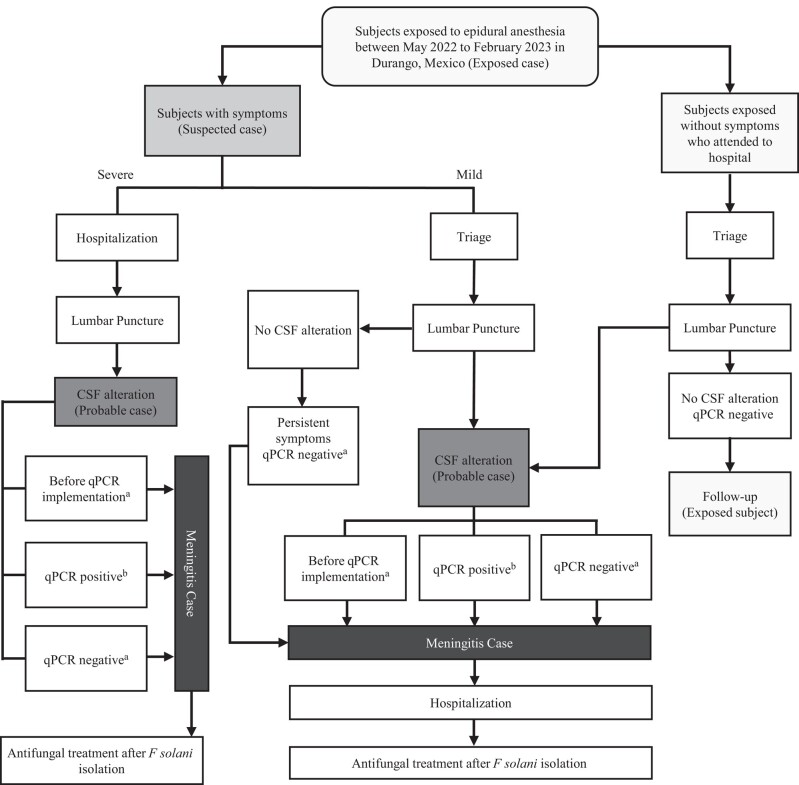Figure 1.
Algorithm for the active search of cases during the Durango Fusarium solani outbreak. An overall of 1801 persons were exposed to surgical procedures under neuraxial blockade in 4 private clinics between May 2022 to February 2023 in Durango, Mexico. The search of cases was carried out according to the presence of symptoms and cerebrospinal fluid (CSF) alterations. Subjects with severe or mild symptoms were classified as suspected cases and were immediately hospitalized or examined in the triage area, respectively. Lumbar punctures were performed and the presence of CSF alterations allowed the identification of probable cases, whereas the meningitis cases were identified by clinical-epidemiological data or by laboratory test (culture or real-time polymerase chain reaction [qPCR]). Some patients with mild symptoms and no CSF alterations were classified as meningitis cases based on their clinical-epidemiological data. Three exposed subjects without symptomatology showed CSF alterations whereas the rest of the exposed subjects were followed up in an ambulatory setting. The meningitis cases received antifungal drugs after F solani isolation. aSubjects classified as meningitis cases by clinical-epidemiological association. bSubjects classified as meningitis cases by laboratory test.

